Abstract
Anthracene, fluorene, carbazole, dibenzofuran, and dibenzothiophene are five typical by-products of coal conversion which are likely to be environmental pollutants. These were radiolabeled to high specific activity and purity by simple tritium exchange and evaluated for environmental fate in laboratory model ecosystems. Anthracene and fluorene were biologically converted to hydroxy and keto analogs. Carbazole was N-methylated and N-acetylated. Dibenzothiophene was microsomally oxidized to the sulfoxide and sulfone. Dibenzofuran was relatively inert to biodegradation. The octanol/water partition coefficient for the parent compounds was well correlated with ecological magnification indicating the possibility of predicting environmental behavior from physicochemical parameters.
Full text
PDF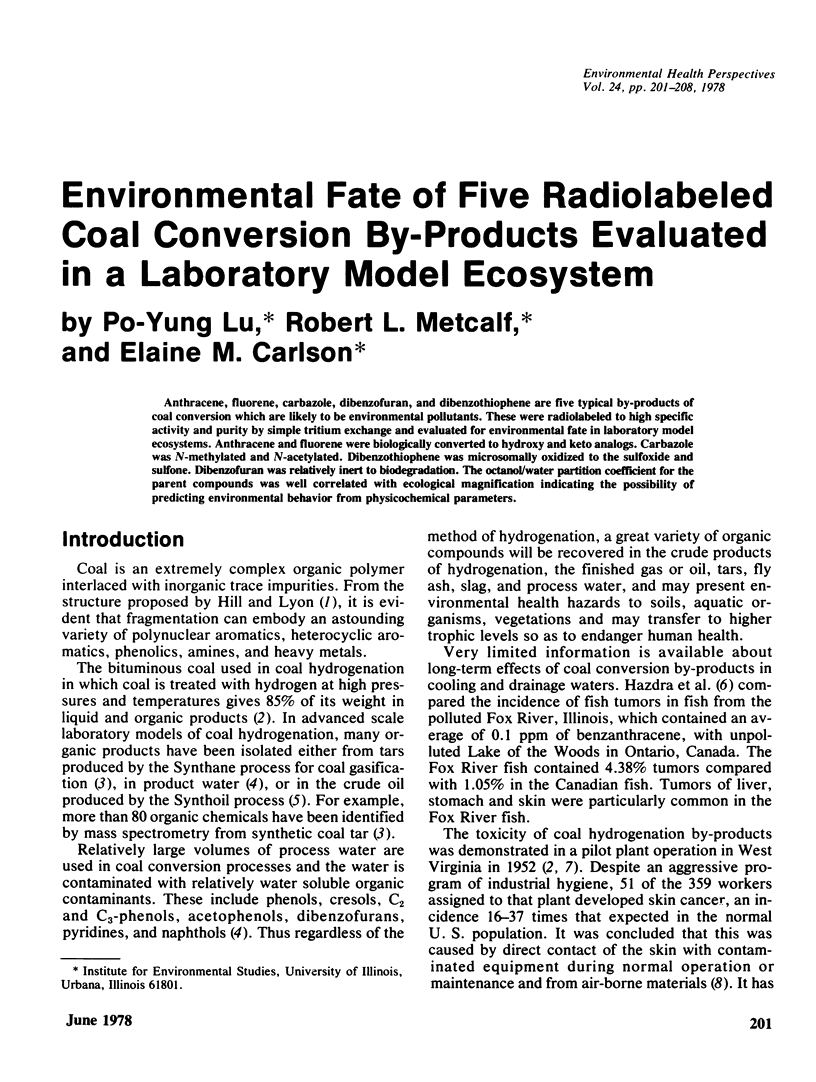
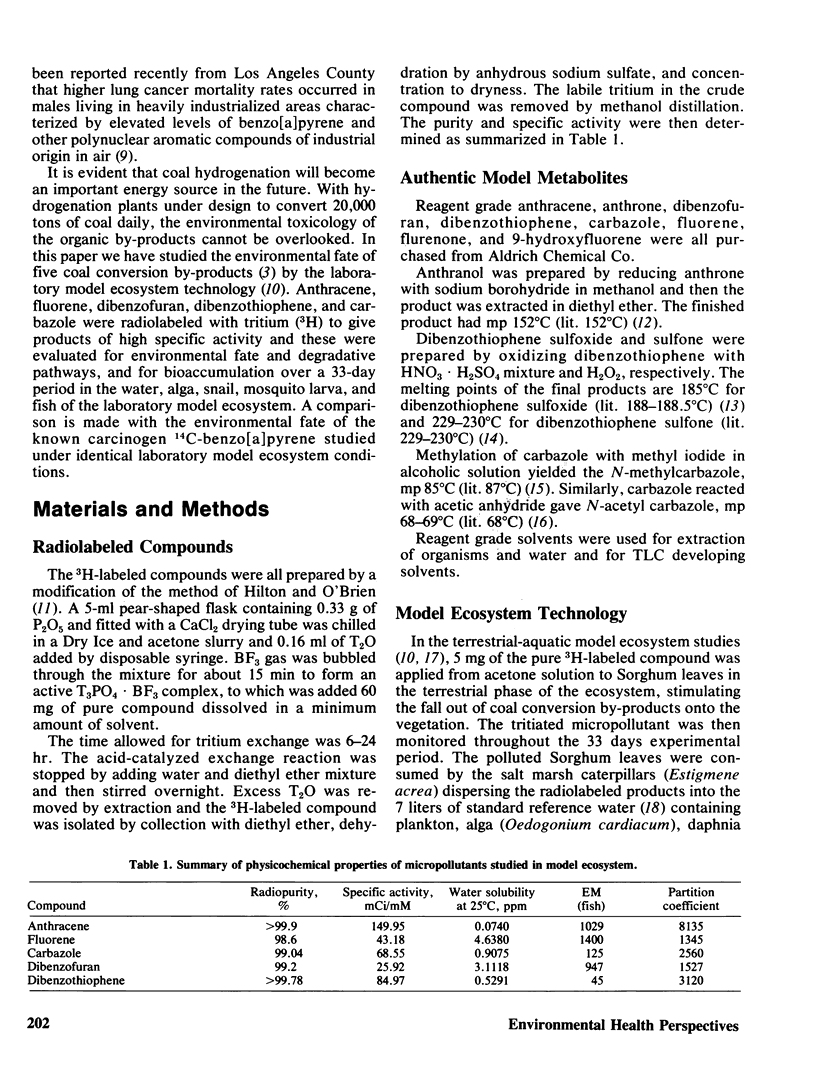
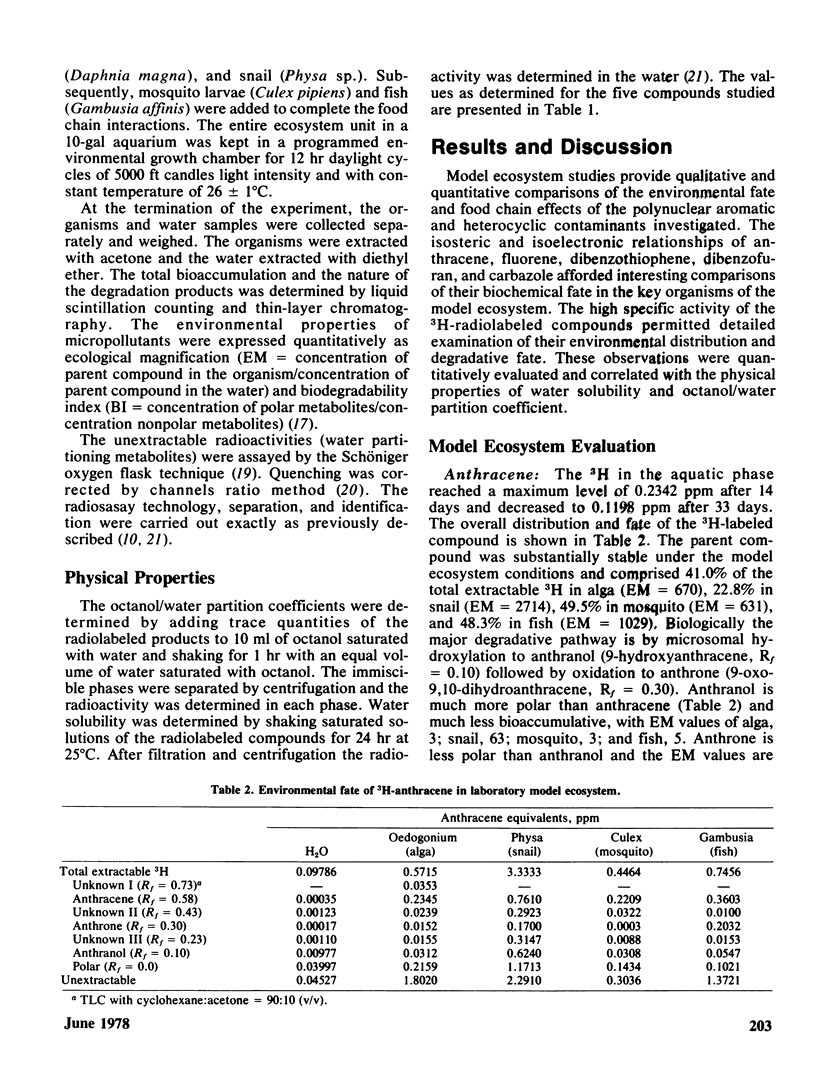
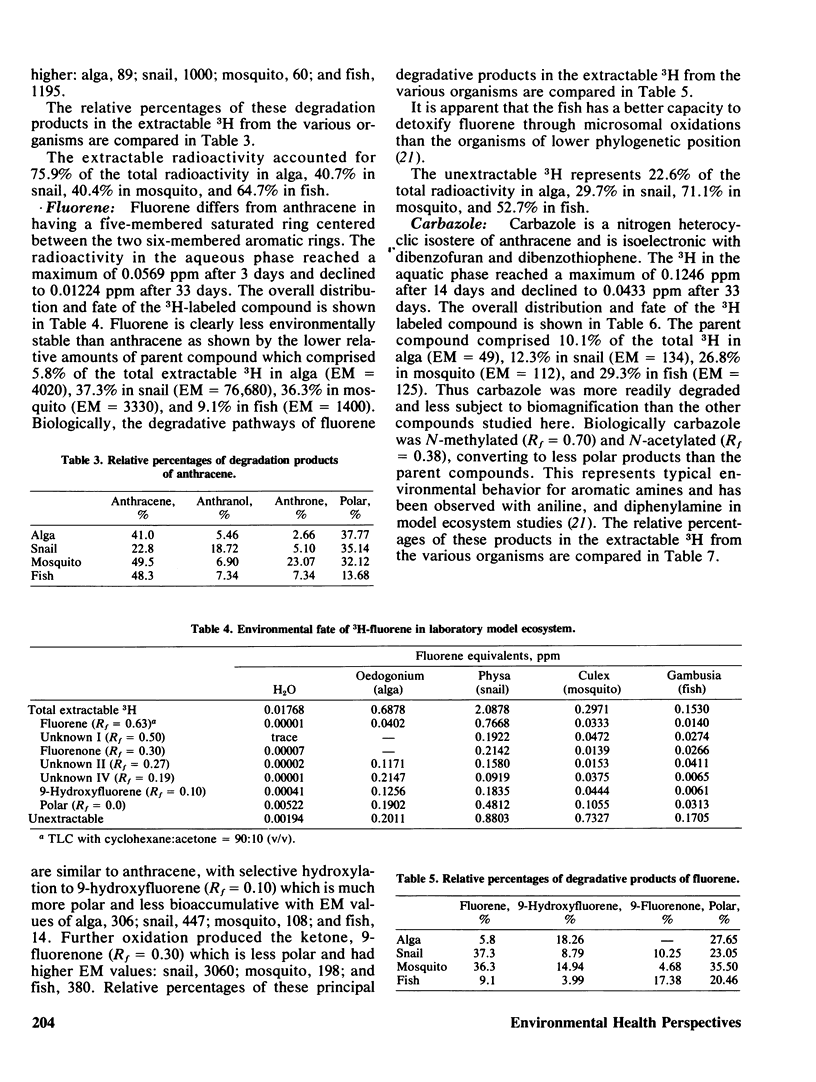
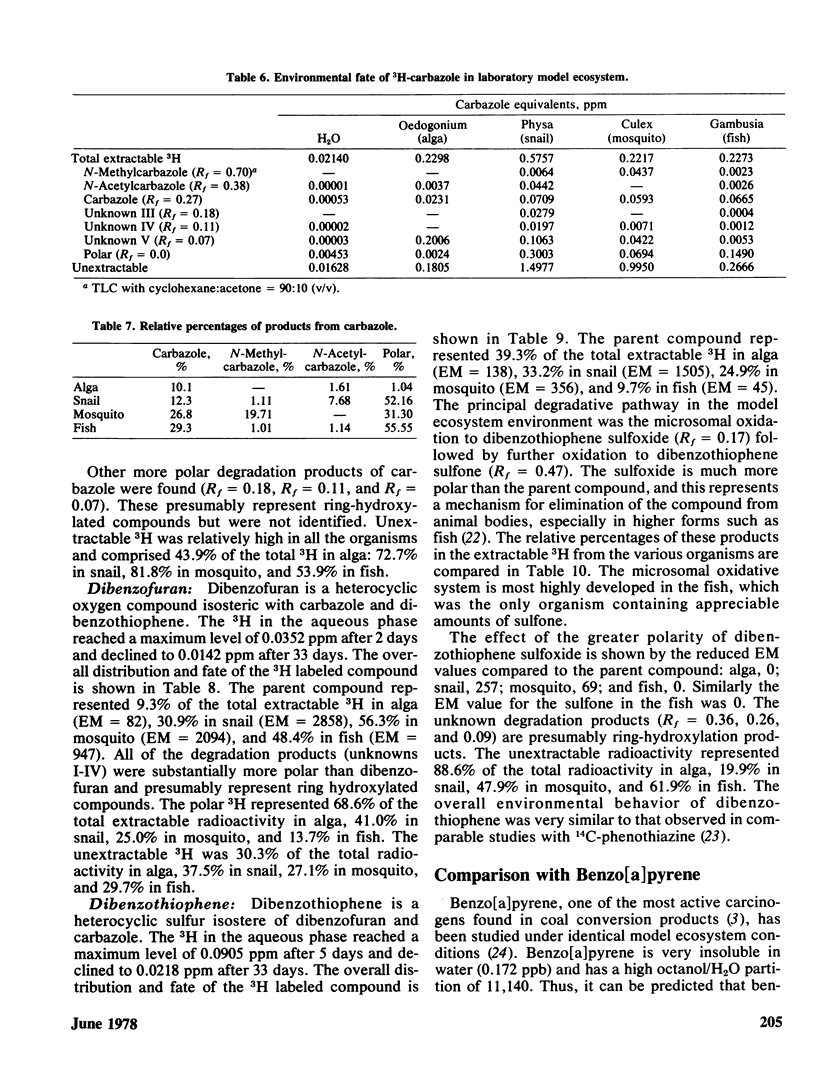
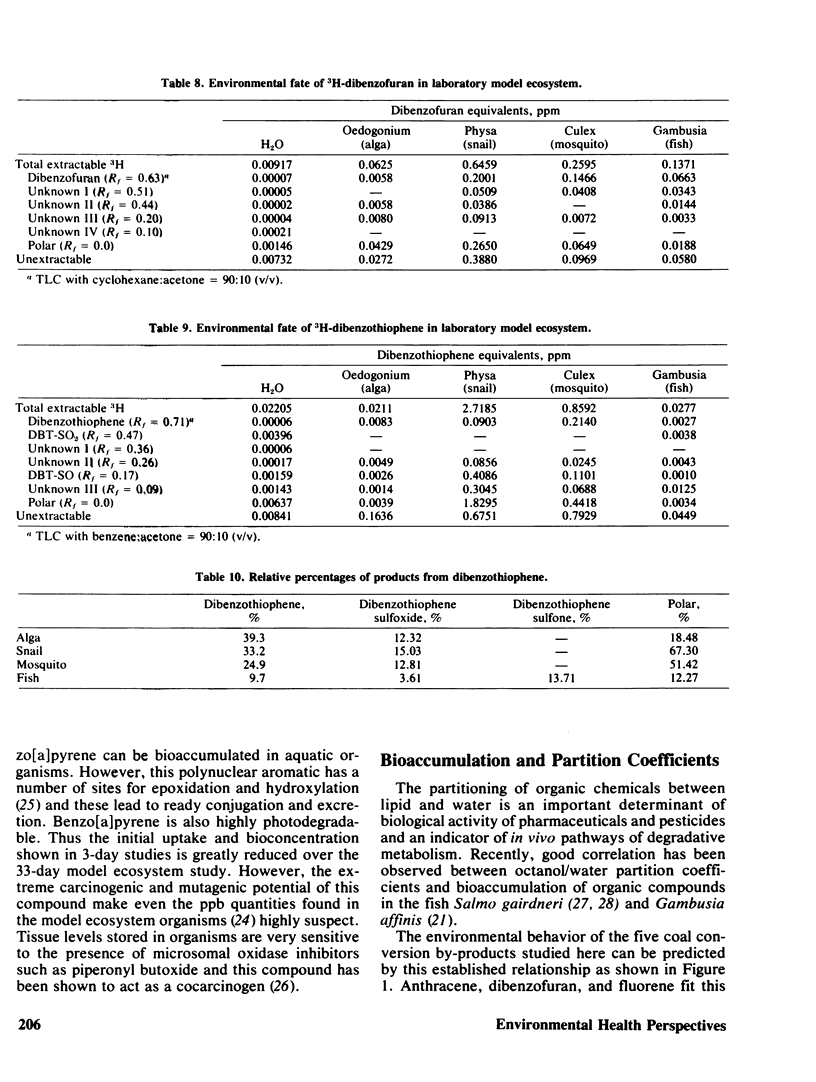
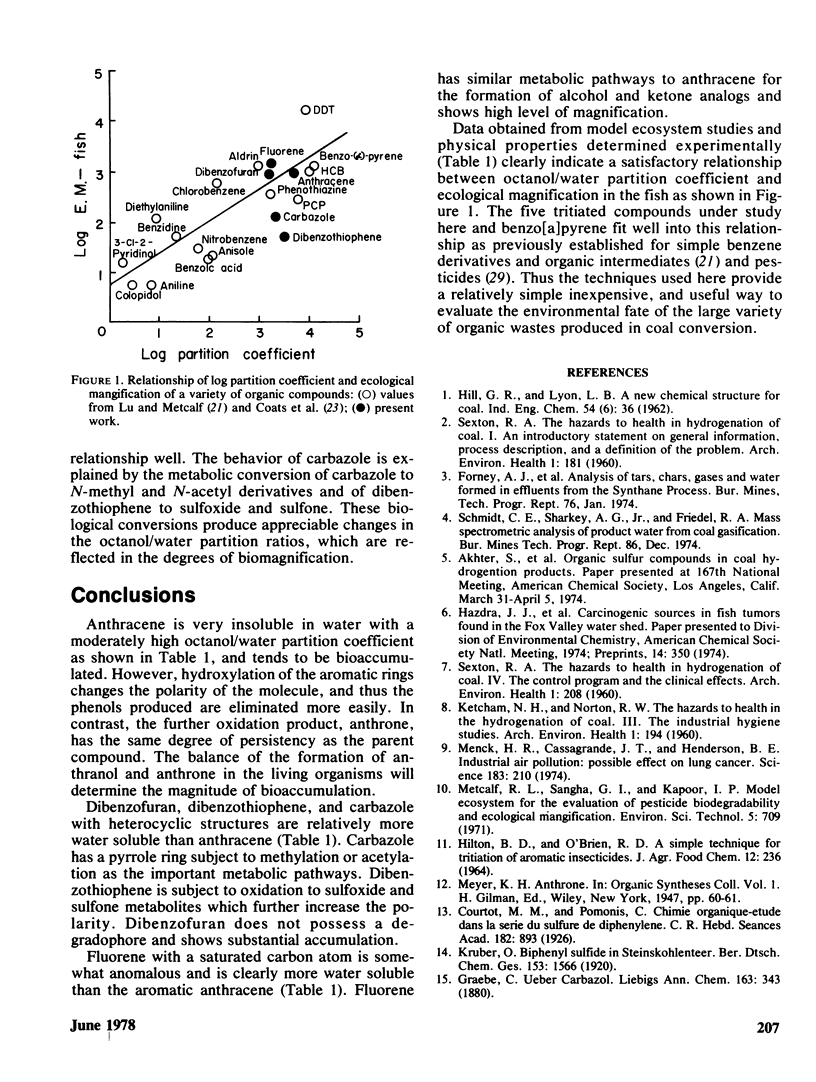
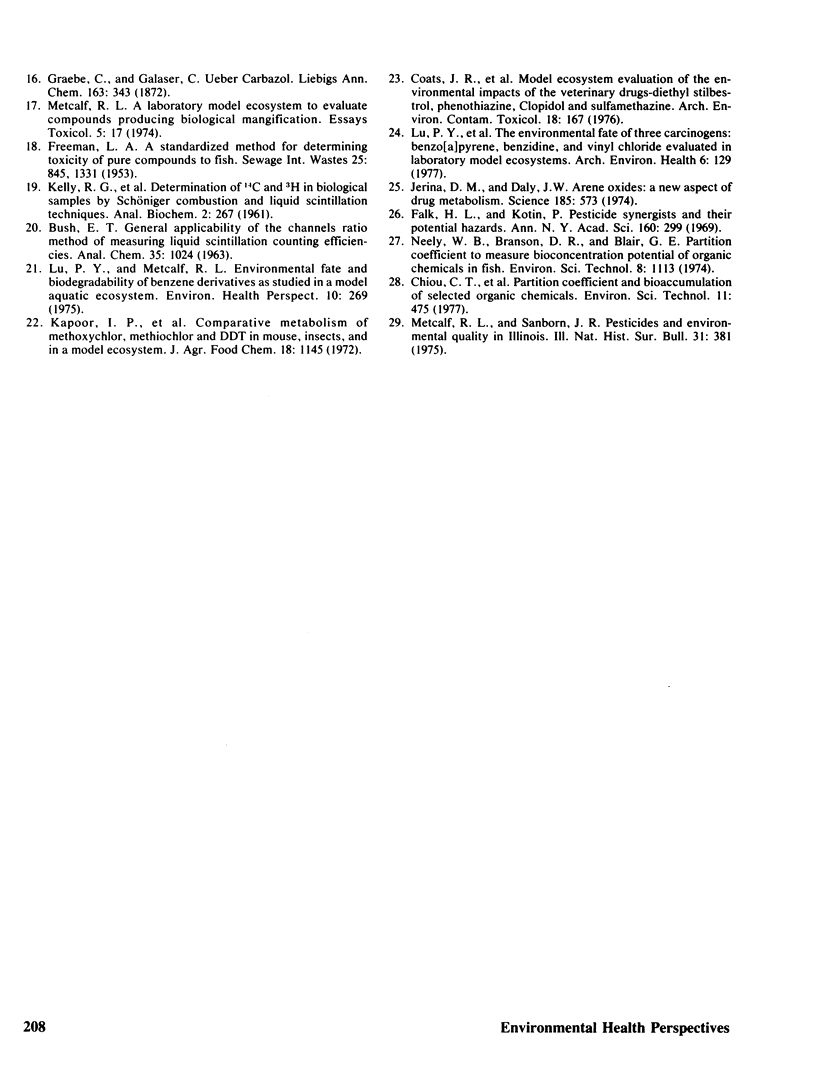
Selected References
These references are in PubMed. This may not be the complete list of references from this article.
- Falk H. L., Kotin P. Pesticide synergists and their metabolites: potential hazards. Ann N Y Acad Sci. 1969;160(1):299–313. doi: 10.1111/j.1749-6632.1969.tb15850.x. [DOI] [PubMed] [Google Scholar]
- Jerina D. M., Daly J. W. Arene oxides: a new aspect of drug metabolism. Science. 1974 Aug 16;185(4151):573–582. doi: 10.1126/science.185.4151.573. [DOI] [PubMed] [Google Scholar]
- KELLY R. G., PEETS E. A., GORDON S., BUYSKE D. A. Determination of C-14 and H3 in biological samples by Schoeniger combustion and liquid scintillation techniques. Anal Biochem. 1961 Jun;2:267–273. doi: 10.1016/s0003-2697(61)80010-9. [DOI] [PubMed] [Google Scholar]
- KETCHAM N. H., NORTON R. W. The hazards to health in the hydrogenation of coal. 3. The industrial hygiene studies. Arch Environ Health. 1960 Sep;1:194–207. doi: 10.1080/00039896.1960.10662686. [DOI] [PubMed] [Google Scholar]
- Kapoor I. P., Metcalf R. L., Nystrom R. F., Sangha G. K. Comparative metabolism of methoxychlor, methiochlor, and DDT in mouse, insects, and in a model ecosystem. J Agric Food Chem. 1970 Nov-Dec;18(6):1145–1152. doi: 10.1021/jf60172a017. [DOI] [PubMed] [Google Scholar]
- Lu P. Y., Metcalf R. L. Environmental fate and biodegradability of benzene derivatives as studied in a model aquatic ecosystem. Environ Health Perspect. 1975 Apr;10:269–284. doi: 10.1289/ehp.7510269. [DOI] [PMC free article] [PubMed] [Google Scholar]
- Lu P. Y., Metcalf R. L., Plummer N., Mandel D. The Environmental fate of three carcinogens: benzo-(alpha)-pyrene, benzidine, and vinyl chloride evaluated in laboratory model ecosystems. Arch Environ Contam Toxicol. 1977;6(2-3):129–142. doi: 10.1007/BF02097756. [DOI] [PubMed] [Google Scholar]
- Menck H. R., Casagrande J. T., Henderson B. E. Industrial air pollution: possible effect on lung cancer. Science. 1974 Jan 18;183(4121):210–212. doi: 10.1126/science.183.4121.210. [DOI] [PubMed] [Google Scholar]
- SEXTON R. J. The hazards to health in the hydrogenation of coal. 1. An introductory statement on general information, process description, and a definition of the problem. Arch Environ Health. 1960 Sep;1:181–186. doi: 10.1080/00039896.1960.10662684. [DOI] [PubMed] [Google Scholar]
- SEXTON R. J. The hazards to health in the hydrogenation of coal. 4. The control program and the clinical effects. Arch Environ Health. 1960 Sep;1:208–231. doi: 10.1080/00039896.1960.10662687. [DOI] [PubMed] [Google Scholar]


